Mark Justiniani x infinity
Mark Orozco Justiniani doesn’t think he will create any more of the elaborate, tricky, mirror-embedded installations he’s known for, from Venice Biennale to Singapore’s National Gallery. He makes a comfortable enough living doing paintings, which don’t require 40-foot container trucks hauling massive crates and a road crew equal to an Ed Sheeran tour.
For one thing, the massive crates tend to get held up in Customs here, sometimes for up to a year.
For another, he feels he’s said enough about the future of history, and “perhaps beyond,” with the three large installations that make up “Void of Spectacles: Reflections on Passages Through Time and History,” now showing at Ateneo Art Gallery: “Firewalk,” “Arkipelago” and “Well.”

For one more thing, they’re just really hard to construct and move around.
The third floor Fredesvinda Almeda Consunji Gallery at Ateneo may be the most immersive, generous space to explore all three installations from Feb. 6 to July 6. It’s the first chance to view all three together, cementing Justiniani’s vision in one shared slice of time and space.
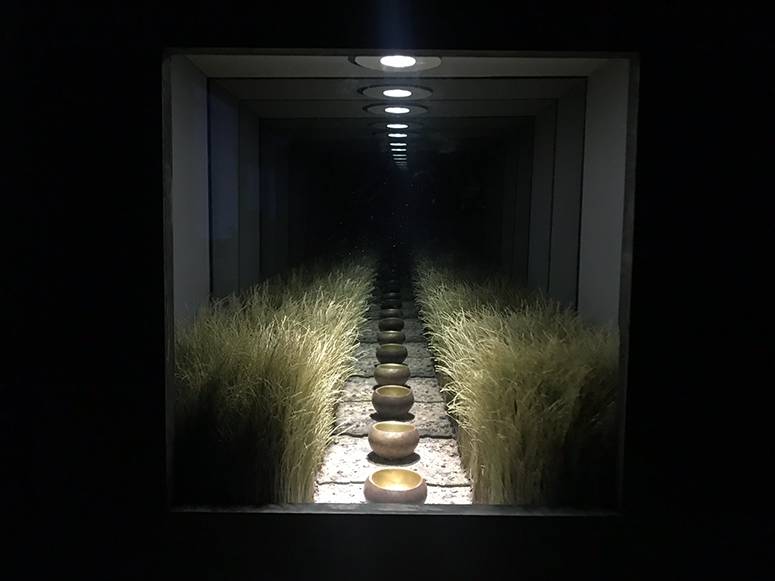
“Firewalk” came first, a simple stroll down a walkway of 33mm non-tempered glass originally commissioned for National Gallery Singapore’s Children’s Biennale in 2017: look down through the two-way mirror into an interstellar space of stacked colored building blocks, books, and loose papers. A dizzying, mesmerizing vision. It was this painter’s opening salvo into a world of three-dimensional “superposition,” a term from quantum theory for objects existing in multiple states that become indistinguishable.
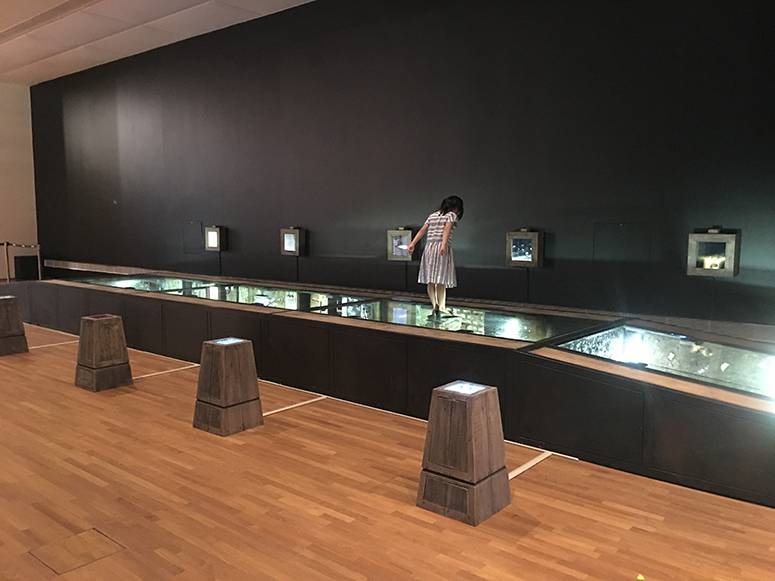
The infinite mirroring of “Firewalk” is almost calming next to “Arkipelago,” unfolding in three parts winding the viewer counterclockwise through a trio of spaces: “Province” (focusing on Mark’s home of Negros and the sugar cane industry), “Capital” (focused on Philippine history, labor, memory, erasure) and “Cyclone,” an even more pronounced vortex winding through the cycle of technology, punctuated with an endlessly reflected kite-string of children’s handwritten prayers. Mark and his artist/partner Joy Mallari labored to finish “Arkipelago” in time to set up for the 2019 Venice Biennale. The difficulty of the task landed him in the hospital with pneumonia.
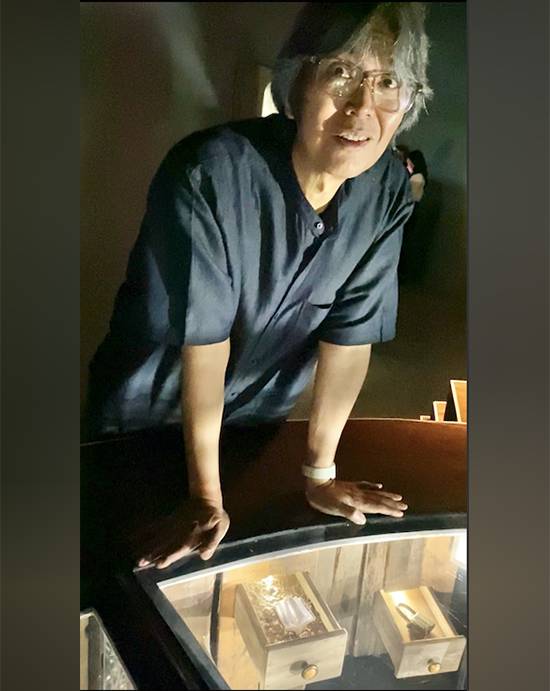
The exhibit concludes with “Well,” a circular floor piece commissioned for the Kinderbiennale in Dresden, Germany shown from 2018-2022, because you couldn’t move things around during lockdown.
Ah, yes. Those “blip” years between, when people stayed frozen in their spaces, seemingly encased in amber. Justiniani painted much more during the lockdown, and he and Joy ended up in the hospital again, this time with COVID. Art is punishing to the body, as is life.

“After my last show was in Venice, and then the pandemic happened, we were hospitalized, so we stayed and rested,” recalls Mark. “We also knew that doing something like this would be physically difficult because of what happened in Venice. We were just very tired. That was during fabrication. We had to ship it to Venice, and then Venice installed it for a month. It was very difficult.”
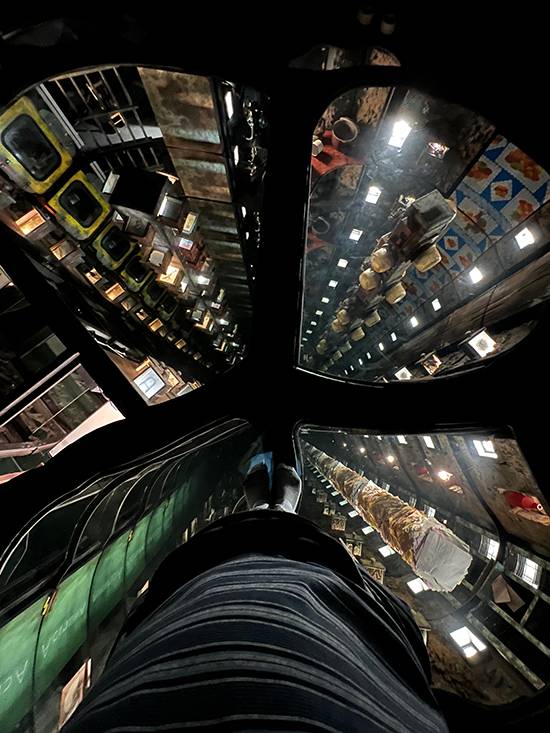
Putting things together for the Ateneo exhibit was “more relaxed, it’s easier to mobilize people here.” He’s still tinkering, adding elements and touches: a hanging tablecloth that stirs local memories in “Capitol” will be treated to cigarette butt burns before the opening.
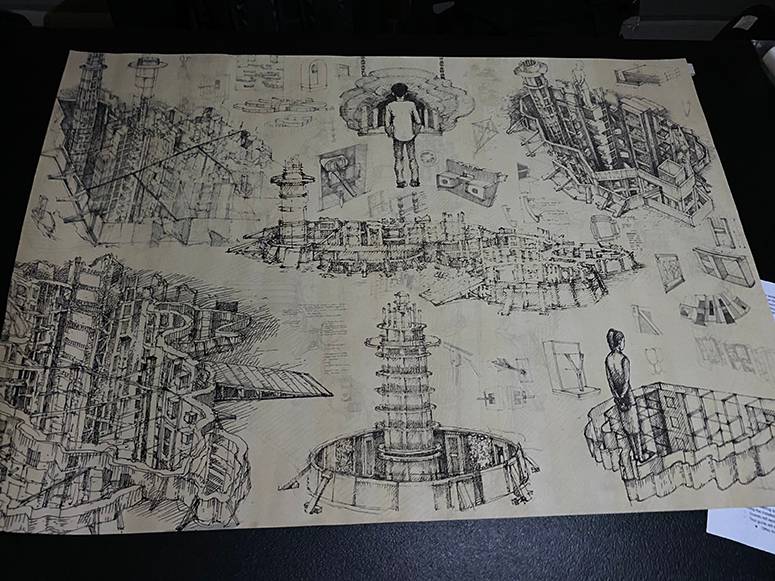
It’s all in the details. Leni Robredo came for a private pre-opening visit, and was struck by the tiny rocking chair in one nook of “Cyclone.” “She noticed something: that we used to see those rocking chairs in every household, but not anymore. Maybe because spaces are smaller.” From the chair, Mark’s lolo would recite war stories while the kids huddled around. “He’d be telling us ‘This is a life I wouldn’t want to live again.’ And yet the country continues to live it again and again. That’s the story.”
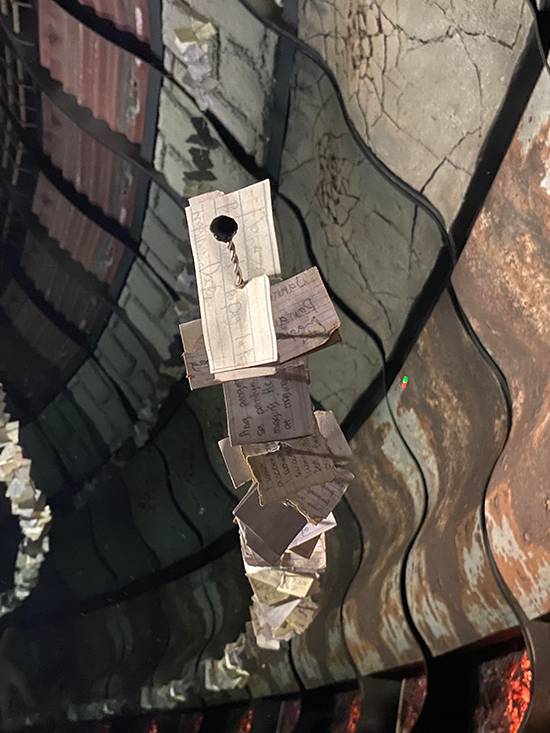
Stories and text are strong components of Justiniani’s infinite space. He was fascinated by jeepney slogans, and as an artist catching an inverted word (“SARAW” as “WARAS”) in a rearview mirror, he hit upon mirroring as an extension of our perception of reality. “A mirror is a two-dimensional surface that carries three-dimensional images,” he notes. “It already extends us to another dimension.” Later, he did art exploring word fold-ins: “Things like the 1986 revolution sharing the same numbers with 1896. Or the word ‘Pilipinas’ is near—it’s not exact—to inalipin, or ‘enslaved.’”

Those inversions show up in “Arkipelago,” such as the reflection on a blackboard of “America” inverted to “A cinema”—and a floating ViewMaster, the American version of the 3D stereoscope. Mark tells us “the first images of the Philippines sent to the US as a new colony was a stereoscope. So we were first shown in the US in 3D.”
Justiniani is self-effacing about his installations. “I’m not the first one to do this,” he admits. “There have been other ‘infinitors.’” The title of the show itself—“Void of Spectacles”—harks to the idea of seeing through different lenses, but also the idea that this is all just show and tell. “The work can be actually criticized as just being a spectacle, if you don’t look at it closely.” Something with infinite depth has ironically been critiqued by some as shallow. “When some reviewed my show, they knew that was one of the weaknesses—by weakness, meaning the visual aspect is just too strong, so that it dilutes what I want to say. So we have to be aware of that.”
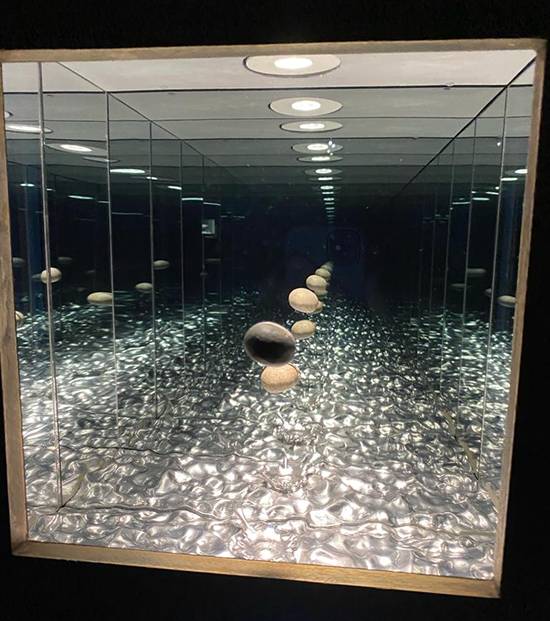
Videos and conceptual drawings accompany the exhibit, showing Justiniani’s process of constructing infinite layers. The sheer display of vision and attention to detail merits close viewing. Maybe you’ll even see something that’s not really there. Justiniani speaks of “ghost limbs,” that sensation amputees may feel when they press their stump next to a mirror, and imagine the leg still there. “It serves a function, it fills in the gap,” he says. “There’s an aspect of a lot of memories that have been erased, so we’re trying to recover it through reflection. Reflection as individuals, or as a nation.”
* * *
Mark Justiniani’s “Void of Spectacles: Reflections on Passages Through Time and History” is showing on the 3rd floor, Fredesvinda Almeda Consunji Gallery, Ateneo Art Gallery until July 6.



